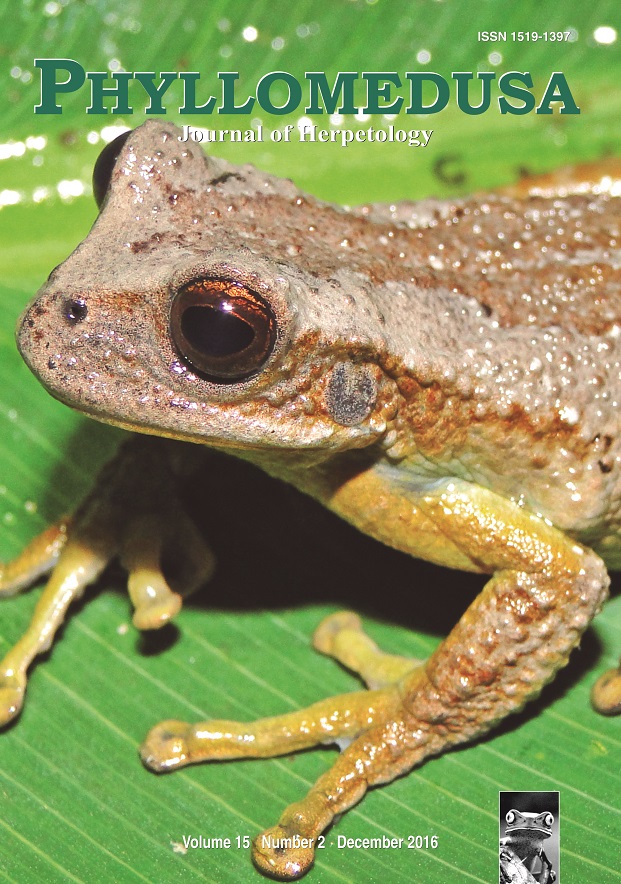Evaluation of factors associated with predation on Caiman latirostris nests (Crocodylia: Alligatoridae) in Argentina
DOI:
https://doi.org/10.11606/issn.2316-9079.v15i2p137-146Keywords:
attraction, Broad-snouted Caiman, eggs, human disturbance, nesting, signs/tracks, olfactory sensory cues, visual sensory cuesAbstract
Predation is a major cause of crocodilian egg loss. However, at present, the mechanisms by which predators detect nests is unknown. Previous studies have reported that predators are able to detect prey using both visual and olfactory cues. This study aims to determine the natural predation rate on Broad-snouted Caiman (Caiman latirostris) nests in a “normal” year (i.e., no extreme climatic events) and whether olfactory or visual cues attract predators to caiman nests, and to evaluate the effect of maternal presence on nest predation. In December 2010, we searched for nests in the north of Santa Fe Province, Argentina. Each nest was assigned to one of the following treatments: (1) control nests (nests were observed from a distance to avoid disturbance), (2) visual attraction nests (yellow flagging tapes were tied to vegetation around the nest), (3) olfactory attraction nests (nests were opened, one egg from the clutch was broken, and then the nests were covered again), (4) olfactory attraction from human disturbance (material was manipulated by researchers). The natural predation rate on broad-snouted caiman nests was found to be 21% during the nesting season. Both olfactory and visual cues were associated with increased predation rates, and human disturbance was strongly associated with increased nest predation at terrestrial sites. Predation rates were less at nests attended by female caiman. Management programs that harvest eggs in wild populations (ranching) are predicated on the assumption that removal of some eggs is sustainable, because some will be lost to natural causes (e.g., predation and flooding) and the remaining hatchlings will have improved survival rates. To reduce nest predation of Broad-snouted Caiman between the time when the nest is found and when the eggs are collected, we propose to avoid identification of nest sites with highly visible markings (e.g., flagging tapes tied to vegetation around nests) and to collect eggs immediately after they are foundDownloads
Download data is not yet available.
Downloads
Published
2016-12-22
Issue
Section
Articles
License
All material originally published in Phyllomedusa belongs to Escola Superior de Agricultura Luiz de Queiroz - Universidade de São Paulo. All contents are under a license of Creative Commons BY-NC-ND.How to Cite
Simoncini, M. S., Marcó, M. V. P., Portelinha, T. C. G., & Piña, C. I. (2016). Evaluation of factors associated with predation on Caiman latirostris nests (Crocodylia: Alligatoridae) in Argentina. Phyllomedusa: Journal of Herpetology, 15(2), 137-146. https://doi.org/10.11606/issn.2316-9079.v15i2p137-146



 Impact Factor (JCR): 0.600
Impact Factor (JCR): 0.600 CiteScore: 1.0
CiteScore: 1.0